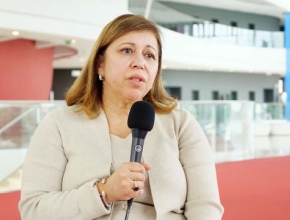References
Targownik LE, Leslie WD, Davison KS, et al; CaMos Research Group. The relationship between proton pump inhibitor use and longitudinal change in bone mineral density: a population-based study [corrected] from the Canadian Multicentre Osteoporosis Study (CaMos). Am J Gastroenterol. 2012 Sep;107(9):1361-9. doi: 10.1038/ajg.2012.200. Epub 2012 Jul 10. Erratum in: Am J Gastroenterol. 2013 Jan;108(1):157. PubMed PMID: 22777336; PubMed Central PMCID: PMC5104563.Is frailty associated with a risk of fractures? Is quantitative assessment of frailty possible?
Alexandra Papaioannou, MD: In terms of frailty, we were able to demonstrate [an association] using a model developed by Doctor Ken Rockwood from Canada. We looked at our Canadian national database called CaMos (Canadian Multicentre Osteoporosis Study) and we were able to identify that older adults, regardless of their bone mineral density, who are frail are at much higher risk for fracturing. What exactly does frailty mean using that model? The more things are wrong with you, the more likely you are to be frail. Those things are not just diseases—they can be things like vision impairment or being socially isolated.
In terms of clinical practice, how do we integrate that into our care? There are more complicated tools, like the frailty index, the Fried frailty criteria, there are also tests such as the get up and go test or walking speed that are very useful and predictive of fractures, falls, mortality, and admission to acute care.
 English
English
 Español
Español
 українська
українська










